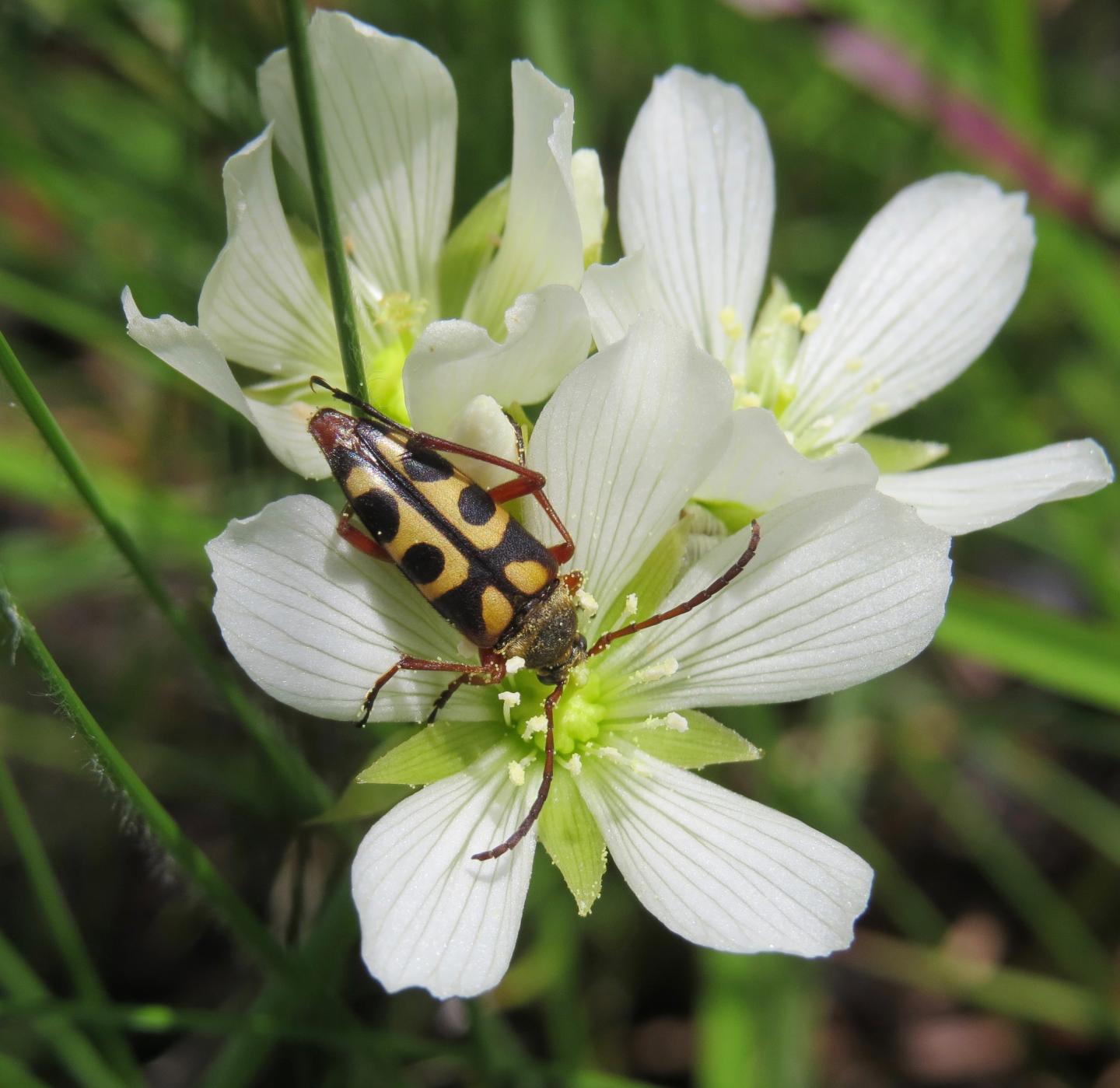Back to February 2018 Newsletter
Pollinators of the Venus Flytrap

Kim Fellows
Have you ever wondered what pollinates a Venus flytrap (Dionaea muscipula)?
Venus flytraps are habitat specialists, found only in bogs of longleaf pine savannas, in a narrow strip of coastal land measuring just 16 km wide and 160 km long in North Carolina, extending into adjacent South Carolina.
The Venus flytrap is a carnivorous plant, absorbing nutrients from trapped insects via the release of digestive enzymes. The trap is a highly modified leaf that closes when an insect touches one of the trigger hairs twice, or touches two trigger hairs in succession. The trap snaps shut in a tenth of a second — three times faster than the blink of an eye.
Researchers at North Carolina State University recently discovered the insects that pollinate the Venus flytrap in their native habitat. During the plant's five-week flowering season (May-June), researchers captured insects found on Venus flytrap flowers at several sites. Each insect was identified and examined for Venus flytrap pollen.
Out of nearly 100 types of insects found on the flowers, only a few were both common and carrying a lot of pollen: a green sweat bee (Augochlorella gratiosa), a checkered beetle (Trichodes apivorus) and the notch-tipped flower longhorn beetle (Typocerus sinuatus).
The researchers also retrieved prey from more than 200 flytraps at the study sites, and found little overlap between pollinators and prey. Only 13 species were found both in a trap and on a flower, and of the nine potential pollinators in that group, none were found in high numbers. The three most important pollinator species were never found in the traps.
The small white flowers with green veins sit atop a tall stalk, usually 15-35 cm, allowing separation from the carnivorous traps below. It is also possible that colour plays a role in separating prey from pollinator, as the leaf blade is red and green. Chemical scents may be yet another factor, and all these possibilities will be further studied.
The Venus flytrap is threatened with habitat loss, and it also needs fire to help clear vegetation so it can thrive in the sun. Regrettably, popular fascination with such plants has led to the poaching and over-collection from their native habitats, and they are listed as a vulnerable species according to the IUCN Red List Criteria.
You can view a lovely poster that Pollinator Partnership sponsored, entitled "They Don't Eat Their Pollinators - Carnivorous Plants of North America and Their Pollinators.”
**
Kim Fellows is the coordinator of Pollination Canada
Photo: Clyde Sorenson. The notch-tipped flower longhorn beetle is one of three main insects that plays an important role in pollinating Venus flytraps. The study also found that Venus flytraps do not prey on these pollinator species.
Not yet a member?
An annual membership to Seeds of Diversity gives you access to our seed exchange, seed grow-out programs, and our online news.

We depend on donations to do our work.

Thank you for your support!
